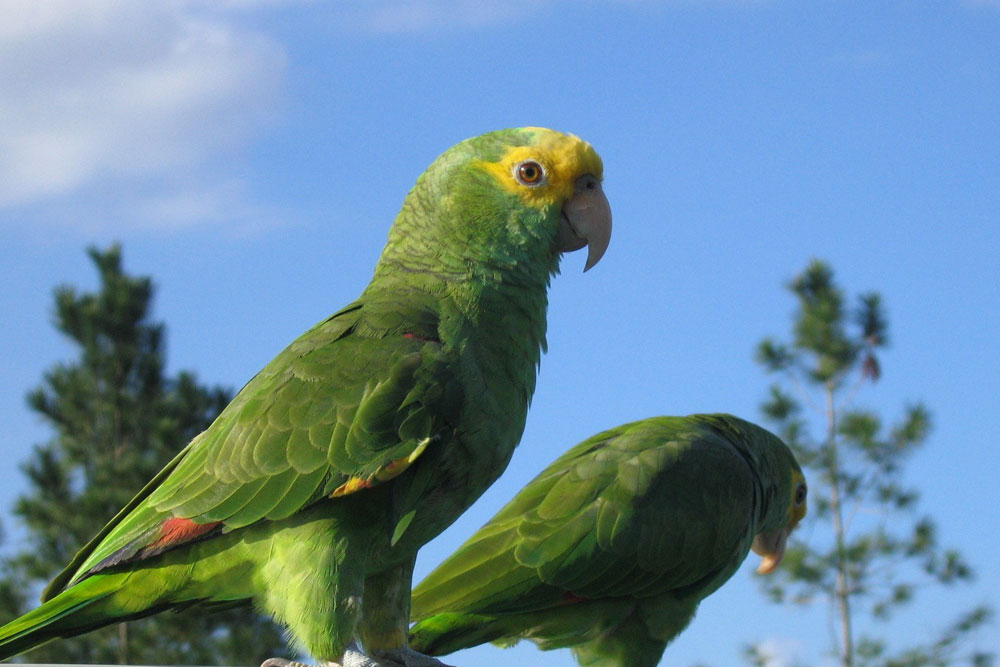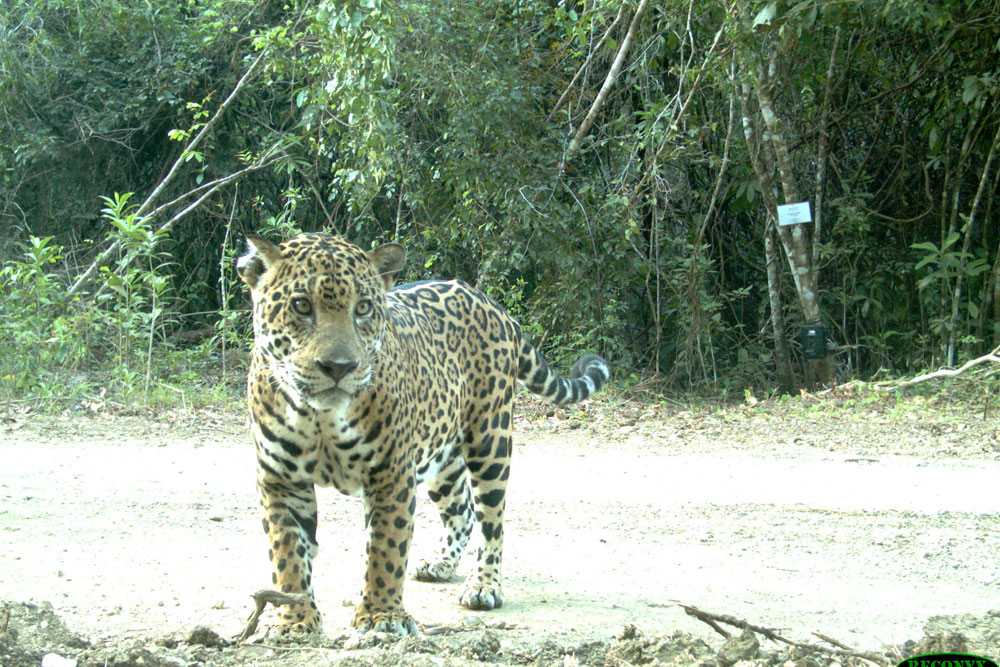BIODIVERSITY - FUANA
The most important feature of the Rio Bravo is that it supports complete and fully functioning faunal communities characteristic of the area. Populations are for the most part healthy, including those of species that are under pressure elsewhere in the Central American range. Over 70 mammal species and 350 bird species have been recorded in the Rio Bravo.
The fauna has also been well-studied with research and survey projects covering all the major groups. In general terms diversity is high including foraging and breeding habitat for a range of species of conservation concern. As with the flora, the most important characteristic is that they occur in fully functioning communities characteristic of the area, most clearly demonstrated by the diversity and relative commonness of top predators (large cats and birds of prey). The area has therefore been selected for re-introduction of the globally threatened Harpy Eagle (Harpia harpyja), a species highly dependent on extensive areas of unbroken forest.
The bird population is diverse with at least 350 species, including 9 Yucatan endemics such as Black catbird (Melanoptila glabrirostris) and Yucatan poorwill (Nyctiphrynus yucatanicus), a substantial proportion of migrant species, such as Belted kingfisher (Ceryle alcyon) and Yellow-throated vireo (Vireo flavifrons). Twelve species are considered imperilled, vulnerable, or of conservation concern under criteria used by international conservation agencies such as IUCN and/or CITES. The Yellow-headed parrot (Amazona oratrix), is endangered and the rest are either Near-threatened: e.g. Black rail (Laterallus jamaicensis) and Crested eagle (Morphnus guianensis), or have Trade controls: e.g. Great curassow (Crax rubra), and Ocellated turkey (Meleagris ocellata). Other species of avifauna may be in peril due to deforestation and over hunting, e.g. Crested guan (Penelope purpurascens).
The mammal fauna includes over 70 species, of which more than half are bats. Some 11 species are of concern and are IUCN Red-listed and/or CITES Listed, e.g. the Yucatan black howler monkey (Alouatta pigra) and Baird’s tapir (Tapirus bairdii) are Endangered. Other species found in the Rio Bravo and threatened in other parts of their range include the Yucatan spider monkey (Ateles geoffroyi), Grey-headed tayra (Eira barbara), River otter (Lutra longicaudis), Red brocket deer (Mazama americana), Great false vampire bat (Vampyrum spectrum), Jaguar (Panthera onca), and Manatee (Trichecus manatus). The presence of a further two species – Cacomistle (Bassariscus sumichrasti) and Central American pygmy opossum (Caluromys derbianus) – has been reported but needs confirmation. Several species considered under pressure from hunting in the region – such as the four cat species apart from Jaguar that also occur, and both Collared and White-lipped peccary (Pecari tajacu and Tayassu pecari) – are also present, as are two regional endemic squirrels. Four endemic rodent species have been reported in northern Belize and may be expected on the Rio Bravo.
The insect fauna undertaken between 1996 and 1999 contain several new country records, important extensions in known range, and unidentified – and probably new – species.
The fish fauna is also diverse but dominated by Ciclidae (Bay snook – Petenia splendida) and Poecilidae (Pike killifish – Belonesox belizanus). Some fish species are also under threat due to overfishing with gill nets, e.g. Bay snook.
The herpetofauna includes seven Red-listed species: Narrow-bridged musk turtle (Claudius angustatus – limited range), Central American river turtle or Hicattee (Dermatemys mawii) – endangered), Mexican giant mud turtle (Staurotypus triporcatus), Tabasco mud turtle (Kinosternon acutum – limited range), Common slider (Trachemys scripta -limited range), and Morelet’s crocodile (Crocodylus moreletii – limited range) and the Boa constrictor (Boa constrictor). All are frequent or common on the Rio Bravo and the area is considered a stronghold for the Hicattee and most of the other species.


